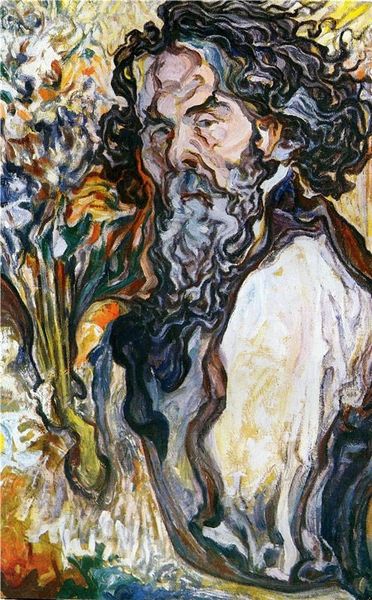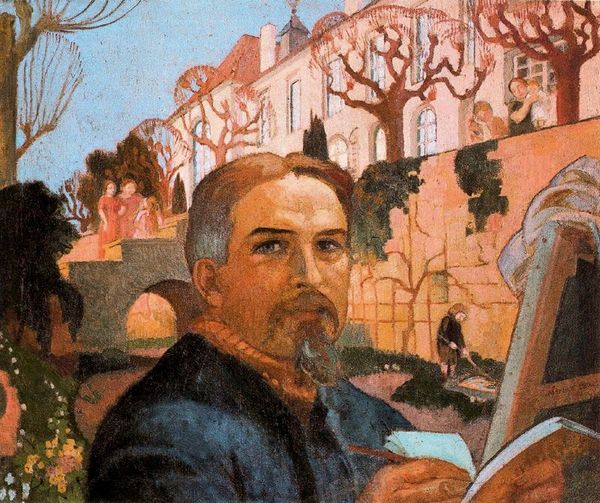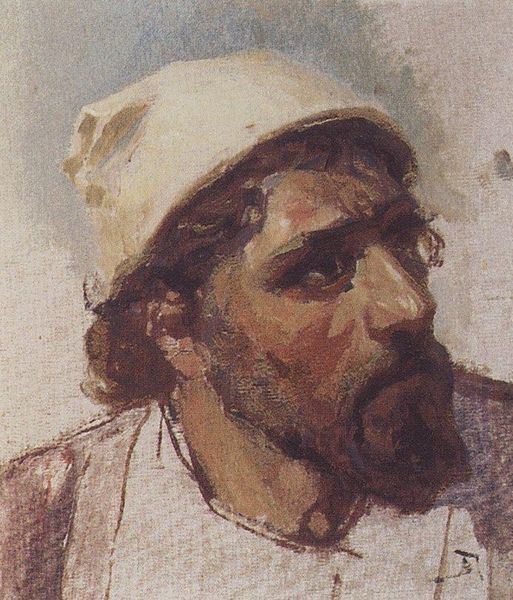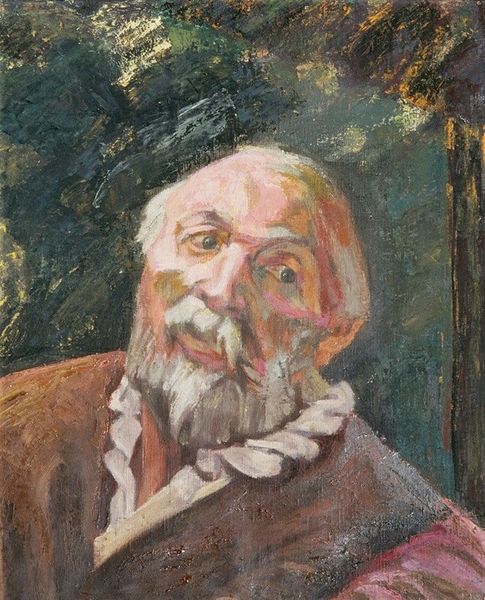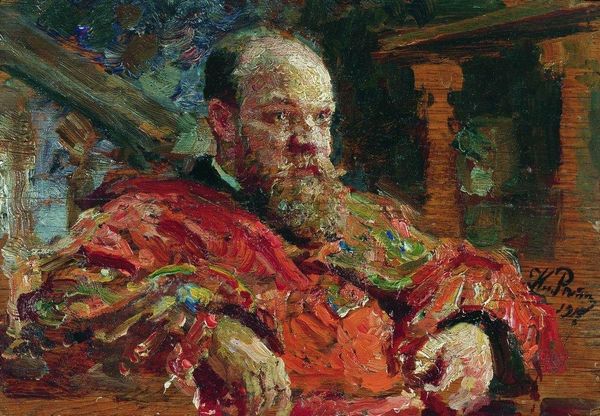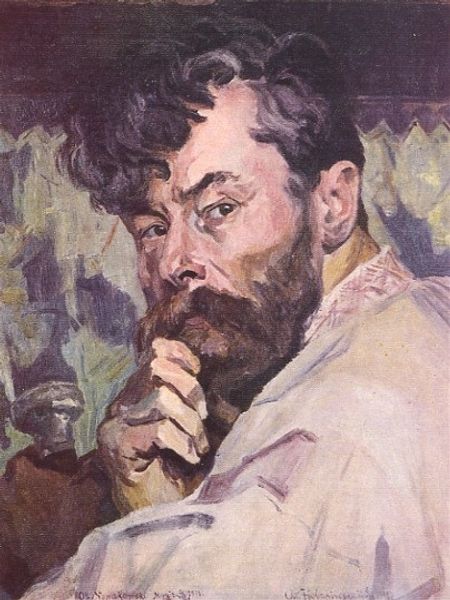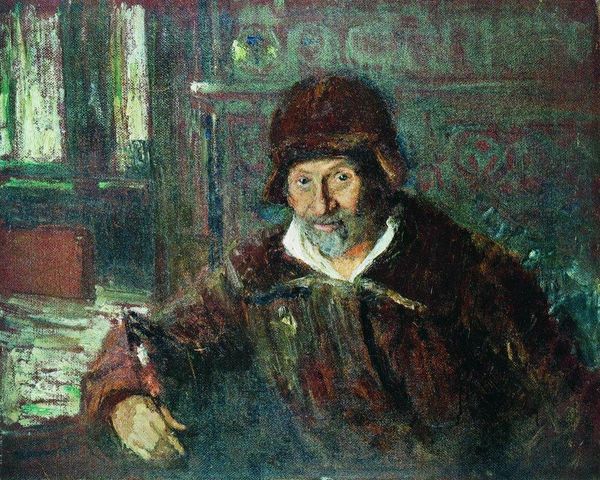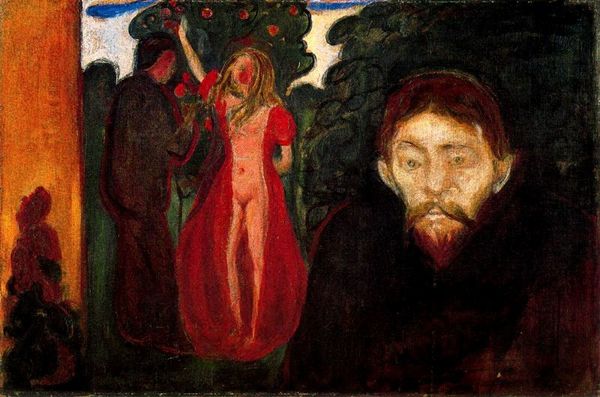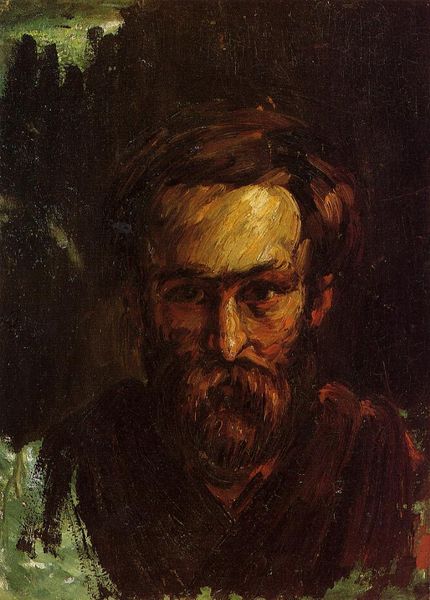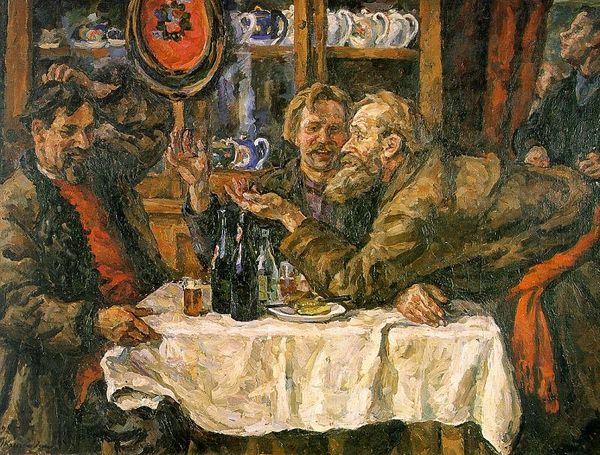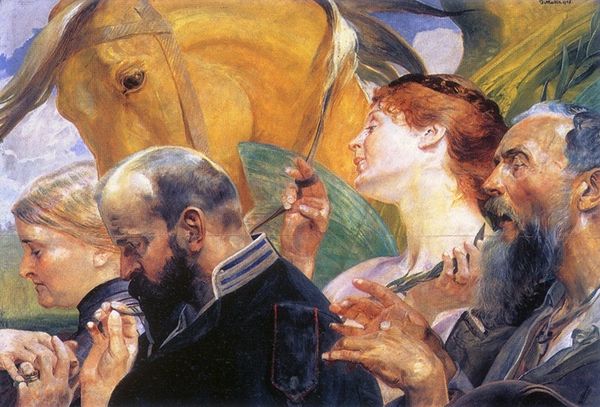
oil-paint
#
portrait
#
self-portrait
#
oil-paint
#
oil painting
#
neo expressionist
#
group-portraits
#
expressionism
#
facial portrait
#
portrait art
#
fine art portrait
Copyright: Public domain
Curator: What a fascinating composition. "Self-Portrait with the Wife," by Oleksa Novakivskyi. Painted with oil, the picture seems like a study of the relationship between two people. Editor: Immediately striking is the somber, almost burdened mood emanating from the male figure. He looks weighted down, a stark contrast to the seemingly lighter presence of his wife behind him. Curator: The painting uses expressionistic strokes and bold colors which speak to the emotional intensity Novakivskyi aimed for. Self-portraits, particularly of artists with their spouses, have a history. Think about their role in establishing status, proclaiming love, or something deeper. Editor: Perhaps, and maybe this image plays with challenging convention. The power dynamic feels inverted. While he's centrally located, her positioning almost reads as watchful, even subtly dominant. There's a folk costume element in her headdress. Its symbolism creates another layer – connecting to cultural identity. Curator: And in Ukrainian art, particularly from the early 20th century, folk elements often stood for resistance and asserting national identity amidst political pressures. That visual language is crucial. Her headdress may imply connection to tradition, which gives her a kind of power beyond domesticity. Editor: I wonder if this portrait, displayed during Novakivskyi’s lifetime, spoke to ideas around partnership within marriage, against a backdrop of traditional expectations in Ukrainian society. Were viewers expected to see these symbolic resonances in the woman's visual power and self-possession? Curator: Absolutely. Images like these offer insights into the cultural values debated and embodied during the artist’s time. Notice how his pose, traditionally associated with a more authoritative depiction, instead seems passive, almost introspective. His symbols may signify something different. Editor: His work certainly poses questions, doesn't it? And his exploration with paint gives so much to consider for the role of portraiture and cultural memory. Curator: Yes, it urges us to rethink conventional readings, offering a rich discourse on partnership, identity, and silent communication through imagery.
Comments
No comments
Be the first to comment and join the conversation on the ultimate creative platform.

